Five Questions and Answers with John Kelly, Redox Corporate Agronomist
What is the current state of soil health on agricultural land in America?
The United States, particularly the Midwest and parts of California, has been blessed with some of the highest quality soil in the world. If you look at the dynamics of those soils, there’s nothing like it anywhere else in the world, so we have that resource. However, there is consensus that our soil health is in decline. That is important because, in the future, we need to improve our productivity. We can’t do that if our soil health is diminishing.
How did we get to this stage of declining soil health?
Simply through the act of tilling the soil, we are exposing this wonderful organic matter to oxygen, which leads to natural oxidation. As oxidation occurs, you are losing carbon organic matter in the soil through the release of carbon dioxide. Secondly, conventional fertilizers, particularly some nitrogen fertilizers, have very strong oxidation properties. One of the cheapest, most common nitrogen inputs, particularly in annual crops in the Midwest, is anhydrous ammonia. It’s cost effective, However, every time it’s injected into the soil, it reduces organic matter. With excellent soil, you can get away with that for many decades. But now we’re getting to the point where we need to look carefully at our inputs and identify those that are going to provide the greatest benefit for the budget dollar for the long term.
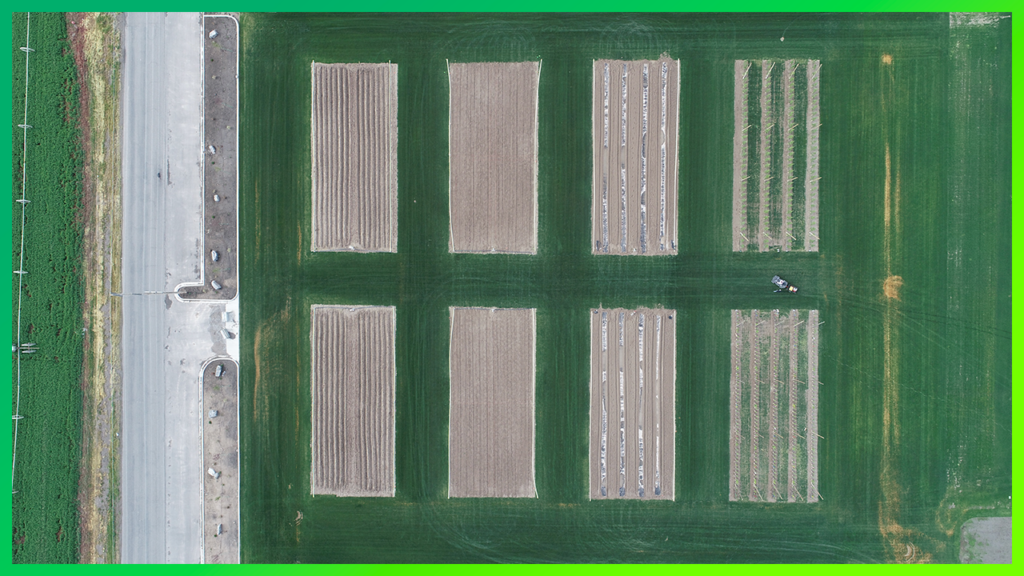
How optimistic are you that this can be rectified?
The good news is, if we understand our metrics and objectives, we can improve soil health relatively quickly. It need not be a multi-year process. If we focus on the factors important to soil health, we can achieve very consistent, great results.
I’m encouraged and heartened to see various cropping systems make some of these changes and get great results in yield and quality as a byproduct.
What are the keys to turning this area around?
At Redox, we see three primary factors to boosting soil health. First is understanding fundamental soil chemistry. If there are chemical imbalances in the soil, we cannot anticipate that the plant will be able to reach its optimum growth, nor can we anticipate that soil biology will be able to function at a high level. Basic soil chemistry, such as soil pH, relatively salinity ratio of cations – all of those come into play. Redox has developed software that is very effective in identifying chemical opportunities that can help this recovery.
We also must have a viable and consistent root zone to facilitate root growth. There’s a symbiotic relationship between the plant and soil biology. Maintaining and growing a great root system is fundamental.
The third key is ensuring beneficial biology is functioning at a high level, which happens, in large part, from good soil chemistry. There often are opportunities to enhance that biology through specific carbon inputs that can promote that biology.
(Link to the following: https://www.redoxgrows.com/solutions/soil-health). When you improve soil health, odds are strong that you will improve crop performance.
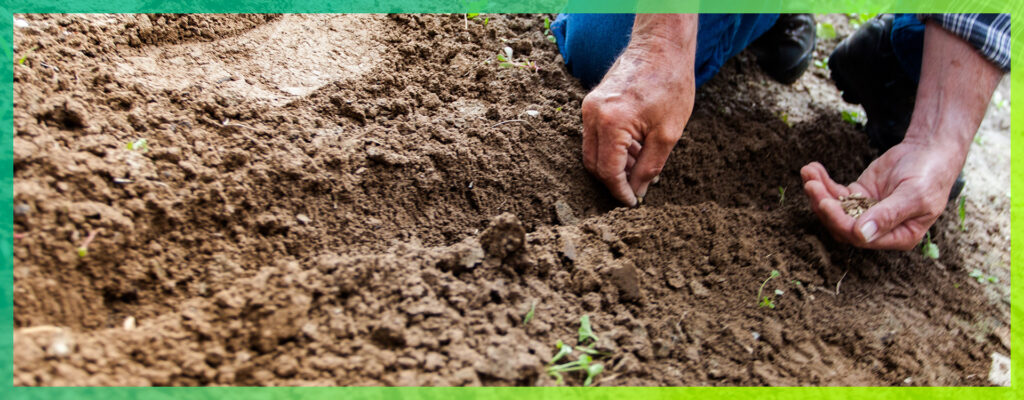
What resources are available to growers who want to improve soil health?
One of the most important things Redox offers is identifying opportunities. Soil analysis can be extremely helpful. In addition, having the expertise to put a shovel in the ground, look at the roots, the crop and the relative symptoms that would occur in the absence of great soil health. Those symptoms include poor water penetration and poor performing crops. It’s important to look at those factors to help identify where the opportunities exist. That drives what inputs are going to provide the greatest return on investment.
Questions? Want to know more about Back to the Basics of Soil Health?
Plants require 16 essential nutrients and utilize a few non-essential beneficial nutrients. Strategic application of specific crop nutrients during key growth stages has proven to improve crop performance. An understanding of the specific growth stage nutrient requirements can greatly improve environmental and financial outcome.
One of the most important growth stages for improving yield potential in permanent crops occurs the preceding season. This important strategic stage is post-harvest. Permanent crops naturally allocate resources to the root system after the crop is harvested. The key resource allocated and stored in the root system post-harvest is carbohydrates. By storing these reserve carbohydrates in the roots, plants have a ready source of energy for the rapidly developing crop the next springtime while the plant root system may not yet be fully functional.
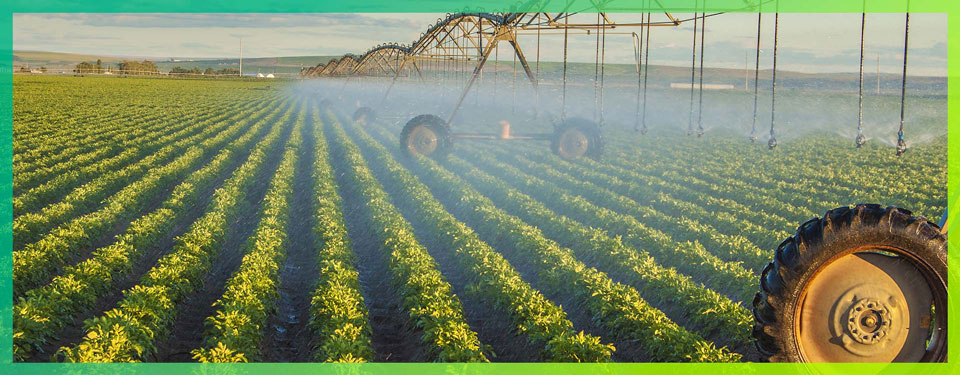
The nutrients ideal for fall post-harvest applications are ammoniacal nitrogen, phosphorus, potassium, zinc, and boron. Ammoniacal nitrogen, particularly when applied via foliar application, is absorbed directly into the plant for protein production. Phosphorus provides energy and promotes root development. Potassium facilitates nutrient uptake and movement. Zinc provides critical enzyme activation required for the root carbohydrate storage process. Boron is essential for future reproductive growth potential.
A proven product to promote increased carbohydrate storage is Banx™. Banx™ is a reacted nutrient product containing potassium, phosphorus, zinc, boron, and specific carbon compounds for exceptional performance. Combined with any ammoniacal nitrogen product, Banx™ is a powerful tool for increasing yield potential.

Questions? Want to know more about Banx™ – Increasing Yield Potential?
“Patience is bitter, but its fruit is sweet.” – Jean-Jacques Rousseau, Philosopher / Writer / Composer
Throughout the United States and in many countries, farmers are successfully incorporating Redox Bio-Nutrients products to help maintain and enhance their soil, plants, crop quality, yields, and storability. Having our products as part of a farmer’s toolbox is important considering the current challenges of high fertilizer costs and market uncertainty.
A key aspect of the scientific research we do is providing empirical evidence (e.g., data) that demonstrate programs that growers can adopt to produce more food with fewer inputs.
At our company headquarters in Burley, Idaho, we have a research team that utilizes 20 acres of available farmland to mimic grower scenarios on various perennial and row crops. Year to date, 24 trials have been conducted this growing season on corn, alfalfa, honey crisp apples, tomatoes, table grapes, and turf. The value of turf is easily overlooked as the single largest irrigated agricultural crop, but Redox Bio-Nutrients is providing nutrient stewardship programs to aid golf course maintenance as well.
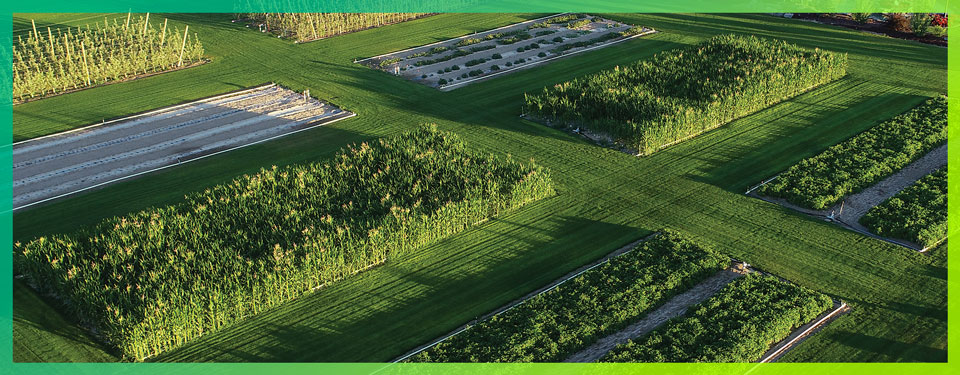
At corporate headquarters, we also utilize a sophisticated greenhouse that allows for year-round trials. A second greenhouse is currently under construction to decrease the feedback time needed to adequately test up-and-coming technologies, identify appropriate practices, and set new standards in the industry for nutrient stewardship.
To better evaluate root morphology and root mass in later growth stages of crops, we are also constructing a large hoop house at corporate headquarters to contain 36 grow-in boxes that are each 11 square feet and 3 feet deep. Grow-in boxes will allow crop-destruct evaluations of roots for time durations longer than a greenhouse and plant maturity beyond the capacity of a 3-gallon pot. For most 3rd-Party research, standard root evaluations are taken at 45-60 days when plants are still young and have faced limited environmental pressure and no reproductive growth. Grow-in boxes both extend the plant life cycle and expose plants to true-to-farm environmental stressors.
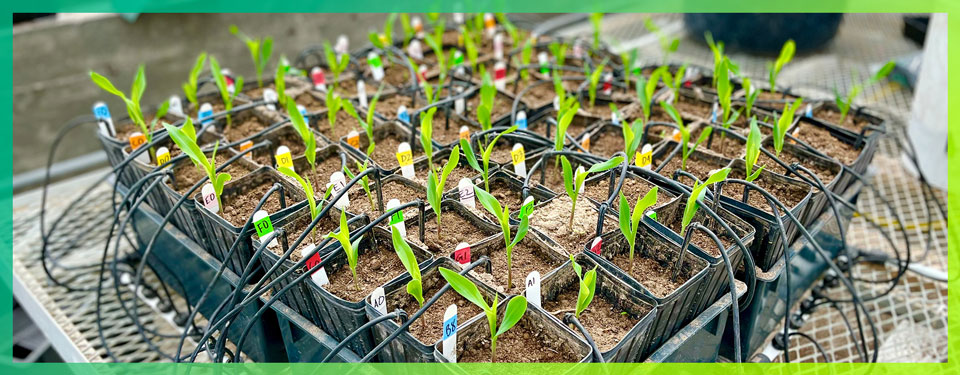
Lastly, we currently incorporate six instrument protocols to understand physiological responses of plants as they mature under abiotic stressors. Some of these measurements are disruptive if not altogether destructive which can be prohibitive in many research settings. These measures and instruments allow us to understand the mechanisms and timing for why our programs can increase yield and quality of crops.
We have learned a great deal from completed trials on the Research Farm including when things do not go as expected or when mistakes are made. It is not uncommon for unexpected results to strengthen our understanding and scientific evaluation of our products and ultimately benefit growers. We regularly receive feedback on our processes from a diversity of experts including academics, 3rd-party researchers, and crop advisors internal and external to our company.
Like many on our dedicated team, I grew up on an agricultural farm. In my case, it was primarily a potato, sugar beet, and wheat farm in Idaho. I also worked on and around neighbor farm fields while growing up, especially bucking hay! Seeing firsthand what it takes for a grower to be successful provides clarity for my work. Knowing the challenges and needs in the field impart a clear direction for our approach. We use applied science, meaning we ask and answer the most pressing questions for our customers under the same conditions that they face – true to farm.

An umbrella concept for this process is the four Rs of nutrient stewardship: the right source of fertilizer or nutrients, the right rate, the right time, and in the right place. We are constantly controlling for these variables in our research and increasing our understanding in the placement of our products.
We know we are on the right track when we consistently get the same plant response under different growing conditions. And even better, when we consistently use less resources to create more food and higher quality food because we understand the underlying ecology of plants, pests, soil, microbes, and the plant-growing climate.
It’s a great feeling to have an influential part in agriculture. When farmers succeed, we all win.
Questions? Want to know more about An Inside Look at the Redox Research Farm?
By: Jason Cook
The root system of plants in today’s agriculture landscape represents one of the greatest operating systems in nature. The activity of nutrient uptake and water movement through the xylem tissue and the transport of photosynthates and other metabolites back to the soil solution is a dynamic process between plant and soil.
One distinct characteristic of the root system that enhances a plants ability to absorb water and dissolved nutrients is classified as lateral root branching. This type of architecture allows the root to run deep and wide through the soil, increasing the surface area by which mass flow, diffusion, and root interception aid the plant in transporting water and nutrients. Maintaining the functionality of a healthy active root system and continual development of new root tips throughout the growing season becomes an important management task, as nutrient distribution and availability in the soil is a compounding issue to plant metabolism. There are also limiting factors such as compaction, poor soil structure, and salt accumulation that reduce the plants rooting ability. Root Rx™ has the capacity to reduce abiotic stress by increasing the quality and quantity of the root system. Key carbon compounds in Root Rx™ facilitate an increase in antioxidant production which allows the plant to grow in the presence of these limiting factors without compromising the viability of the root system.

One of the major limitations in managing a viable root system is the plants’ ability to partition energy equally between roots, shoots, and fruiting sites. As the plant physiologically ages, demand for sugars, and other complex carbohydrates are directed to the fruiting body away from roots and shoots, so we see senescence occur to the root system. This decline in root activity reduces the overall amount of solute flowing via plant sap, reduces metabolic activity, shifts hormone balance of the plant, and can have a drastic impact on survivability.
One solution to maintaining a healthy active root system offered via Redox Bio-Nutrients, is the use of carbon chemistries that increases the uptake and utility of phosphorus by the plant. Rootex™ (6-46-5) and or Rootex™ Flowable (2-15-2) are key phosphorus products designed to meet plant phosphorus demand, reduce chemical tie up with Ca, Al, Fe and promote healthy proportionate root growth during the growing season. This level of efficiency is gained by complexing and chelating the electrical charge of phosphorus molecule with amino acids so that available cations cannot form insoluble chemical bonds that limit both cation and anion uptake by the plant.
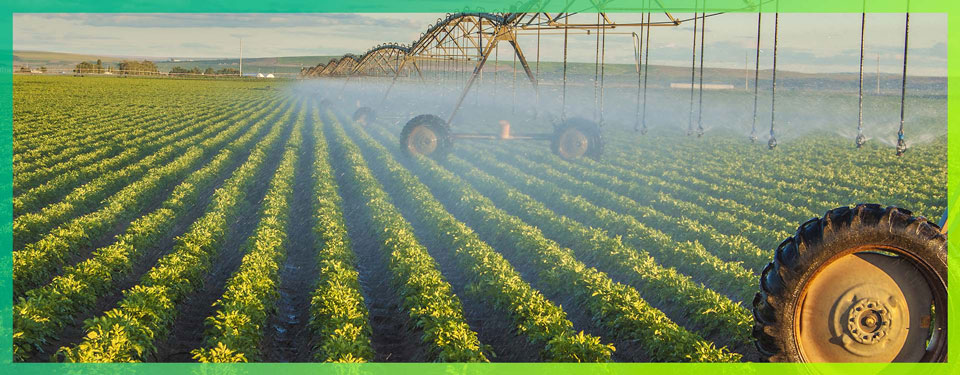
Other key components of Rootex™ that make it extremely valuable compared to other phosphorus inputs are its ability increase the energy cycle of the plant by helping direct the metabolic activities associated with phosphorus and increasing the expression of root growth from a genetic response. These plant processes are not only dependent on phosphorus but also require calcium. The incorporation of calcium into a phosphorus management strategy is a unique offering by Redox Bio-Nutrients. With amino acid chelation of Rootex™ and specialized surfactant technology in Mainstay™ Calcium, we can tank mix Mainstay™ Calcium and Rootex™ together to meet both P and Ca demand. This compatibility offering allows for the opportunity to focus on crop quality improvements associated with calcium nutrition, without sacrificing dollars to chemical tie-up in the soil.
The relationship between phosphorus uptake and utility, root growth and metabolism, and product input selection are all factors that you have control of in generating positive ROI.
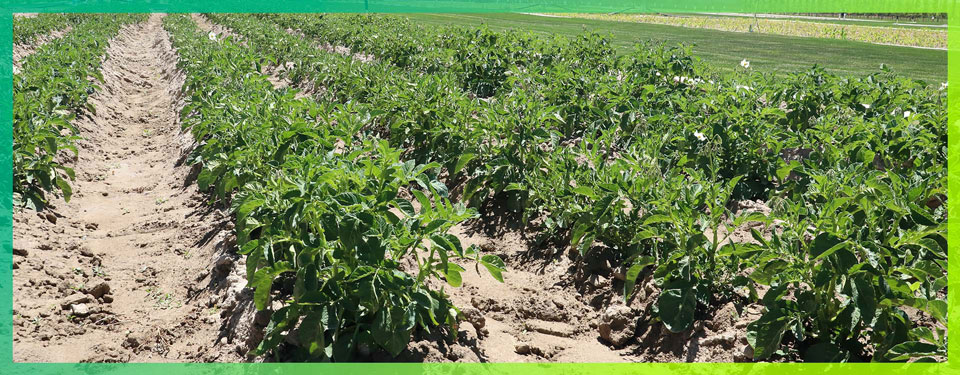
Questions? Want to know more about Root Development; Nature’s Operating System?
The most obvious impact from the prolonged California drought is idle ground. Estimates are that some 800,000 acres of crops weren’t planted because of a lack of water, double the 2021 figure. (Source: https://www.bloomberg.com/news/articles/2022-07-16/california-s-idle-crop-land-may-double-as-water-crisis-deepens)
Unfortunately, problems from nearly three years of sub-par rain and snow extend into many areas.
Along the Central Coast, some of the key issues growers face include salt management and plant nutrient deficiencies, leading to reduced plant vigor and a drag on yield.
The last things growers need are more hurdles to clear in an already difficult year.
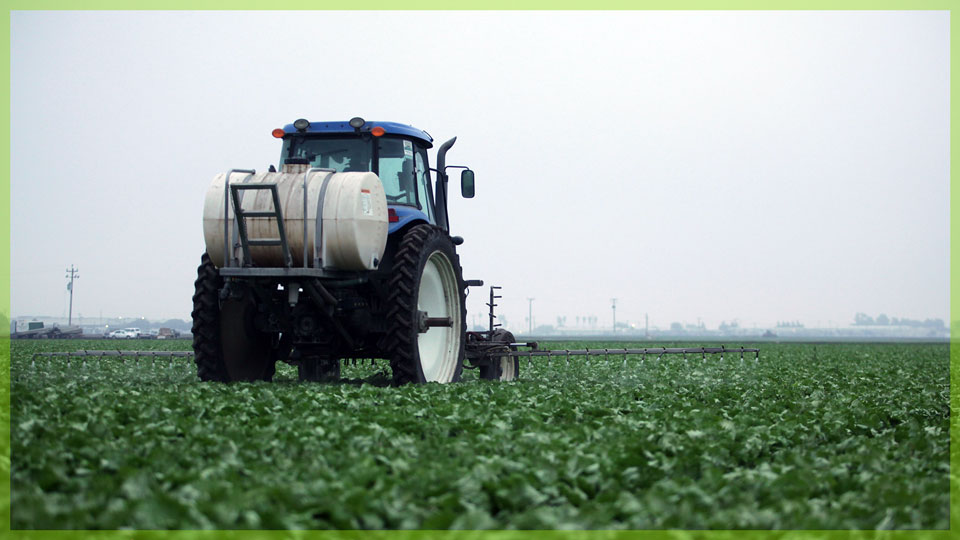
Here are some of the problems seen in the field and how Redox is helping:
Salt Management
Less rainfall has led to less water available to naturally flush out salt levels in soils. Adding to the issue is the increased use of groundwater, which can have higher levels of nitrates, salt, and bicarbonates. The excess salts limit plant roots’ ability to absorb soil moisture and soluble nutrients leading to dehydration and nutrient deficiencies.
Redox Bio-Nutrients Tools for Salt Management:
PeneCal™ is a soil surfactant reacted with microencapsulated calcium. It reduces water surface tension while delivering calcium and water throughout the soil profile. PeneCal™ improves soil structure, air/water relationships, and overall soil health.
Soilex™ provides the agronomic benefits of PeneCal™, as well, with the added benefit of reducing soil sodium. Soilex™ is our proprietary combination of surfactant, humic, fulvic, and soluble carbon compounds. This has strong value for berries, leafy green and vegetable crops, to help flush out the root zone.
Calcium and Potassium Deficiencies:
This is especially concerning for berries, leafy vegetables, tomatoes, peppers, and celery, and can lead to numerous problems such as blossom end rot, black rot, and tip burn.
We recommend Mainstay™ Calcium (available both in organic and conventional), Mainstay™ Si (with the added benefits of silicon), OXYCOM® Calcium (also helpful for plant stress), diKaP™ (great to alleviate heat stress) and Rx Platinum™ (efficient delivery of phosphorus and potassium that reduces abiotic stress, improves root growth, and increases soil microbial diversity).

With input costs at a very high level, efficient nutrient delivery is more important than ever. Instead of the traditional high-volume, high-salt fertilizers, Redox products provide the same or improved benefits in a lower volume, high efficiency, lower-salt index that reduce salt accumulation, strengthens plants and guards crops against heat stress that may be coming on the back end of summer.
Questions? Want to know more about Dealing with Salt in Drought-Parched California?
Summer is a critical juncture at farms across the country. As growers meticulously steward their crops to the finish line, there are steps they can take to help ensure strong yields and returns on investment.
Mainstay™ Si boosts many crops in several ways, including strengthening cell walls, which lead to stronger plants, higher soluble solids, better firmness of the crop and increased shelf life. Additional benefits include increased antioxidant production and better defense against heat stress.
“Now is the time when the applications of Mainstay™ Si help with yield and quality,” said Redox Bio-Nutrients Corporate Agronomist, John Kelly. “These benefits go beyond crop quality to include better drought tolerance and better moisture utilization. In addition, new leaves that are formed tend to be about 20 percent thicker, which means you have better photosynthetic potential in those leaves.”
Here are updates from our agronomists in the field:
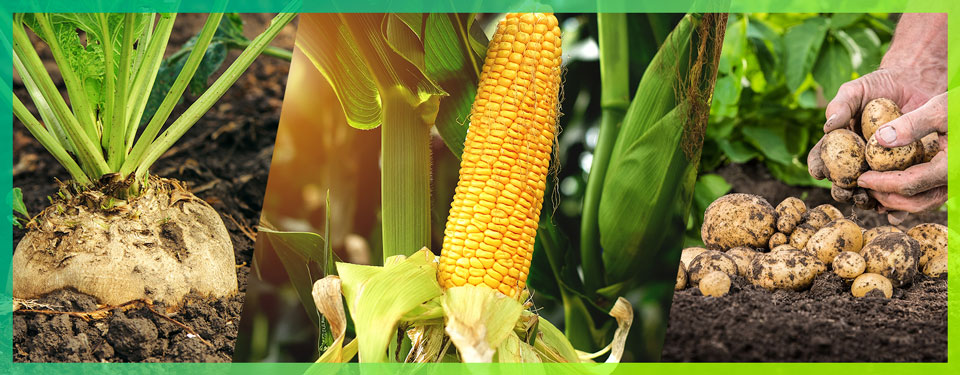
Intermountain Region – Sugar Beets, Corn and Potatoes
From Jason Cook, Redox Bio-Nutrients Agronomist
The following trend is true for a lot of crops in my territory – the better you can get them up and going, the better they finish on the back end.
My top priority right now is setting up the growers I work with for a strong finish. We’ve basically done everything we could, in terms of optimizing nutrients going through vegetative growth stages. The transition into reproduction and reproductive growth is paramount in how we manage these plants going forward.
Potato foliar applications of Mainstay™ Si are just starting, which will strengthen the plants.
For sugar beets utilizing this product, we’re already seeing benefits, in terms of leaf thickness and a glossy sheen on leaves, indicating strong health.
Corn crops are in their growth stage and early signs are that Mainstay™ Si is helping the plants along.
After a sluggish start for many in my territory due to cold, wet conditions, the growing season of late has been nearly ideal, with warm days and cool nights. The expected hot temperatures associated with the season bear watching.
For example, you’ll watch a potato leaf just kind of lay there, instead of being perked up on the stem. It’s an indication that the plant is suffering from heat stress. One of the benefits of Mainstay™ Si is it helps plants through hot spells.

Midwestern Region – Soybeans
From Eric Massey, Redox Bio-Nutrients Agronomist
Soybeans are in an early reproductive stage in Wisconsin, Michigan, and Illinois. Flowers and pods are starting to form. The R3 growth stage is a critical juncture and requires that growers adjust to changing nutritional needs of the plant.
A key is trying to keep the soybeans staying as green as possible for as long as possible, which helps with bean sizing.
At this growth stage, incorporating Mainstay™ Si at 1 pint per acre provides silicon and calcium nutrition that are both pertinent. Combine that with Supreme™ at 1 pint to 24-ounces per acre, and you have aided the plant in nitrogen metabolism and helping set the bean pods, so there will be good nutritional focus.
Studies consistently indicate that this approach leads to a 6 to 8 bushel increase in yields, which provides a significant return on investment for the grower.
If growers made initial applications of Mainstay™ Si and Supreme™, their pod sets and blossom support will be really good. It’s going to be important for those growers to have nutritional supplementation later when pod fill starts, because they’re going to have a lot more pods on the bean plant, which will require stepping up their nutrition. That’s where diKaP™, TriPlex™ Micro and OXYCOM® Calcium will help finish off that crop in a favorable way.

Questions? Want to know more about Mainstay™ Si Makes a Significant Difference for Many Crops?
Summertime signals the inevitable need to manage heat stress in turf, especially if you’re managing cool season turf.
Under severe heat stress, turf is more vulnerable to fungal diseases, traffic and wear tolerance, mechanical injury and insect damage. If you aren’t careful, your overall turf quality can plummet.
Experienced turf managers may vent their playing surfaces with solid tines on their aerification equipment, Air2G2 machines to force oxygen down into the soil, and a multitude of wetting agents to manage soil moisture content. Another standard approach is hand watering to cool the playing surface during the day. These are all beneficial practices during high heat.
When it comes to plant physiology, there’s the one nutrient that regulates stomatal conductance and transpiration during the day – potassium.

Here’s why that’s important when it comes to heat stress.
Maintaining adequate levels of potassium is critical during times of high heat, as it regulates stomates opening and closing.
When the sun comes up and the dew burns off, stomates open, that’s what primes the pump of water and nutrients coming out of the soil, into the root system and moving up into the plant cells in the leaf. In turn, the loss of water in the form of water vapor is triggered through the stomates to cool the plant.
Plants that lack adequate levels of K lose optimal stomatal conductance and reduce the plant’s ability to cool itself. Evaporative cooling brings down the temperature of the leaves, which is critical to maximize the plant’s genetic potential during high heat.
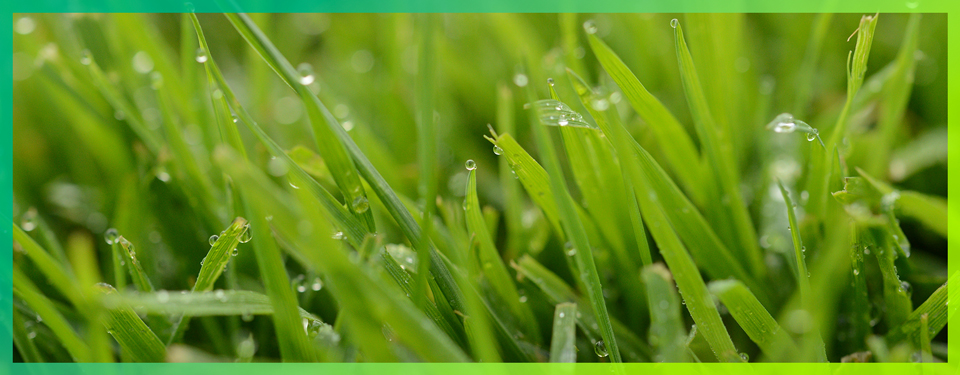
Redox TurfRx™ K+ is a significant ally in this seasonal battle. It gives you more than just complexed and chelated sources of potassium and phosphorus. Superior plant utilization, Polyphenol production reduces stress, Complexing and chelation creates the Redox advantage.
The chemistry of TurfRx™ K+ is differentiated by specific mineral chemistry and bioactive carbon compounds, which increase the production of phenolic compounds – a specific type of antioxidant, that’s important for secondary metabolic pathway production. This is critical for the plant’s ability to regulate solute movement and gas exchange during high temperature extremes.
We have a lot of summer left, with many more days of high heat. The steps you take now to protect your turf will pay dividends well into the future.
Cotton fields are blooming at farms throughout North and South Carolina. This is an important stage of the growing season. What happens over the balance of this month in the more than 700,000 acres will go a long way to making a successful harvest in October and November.
Dryland farming is very common for row crops in the Carolinas, so moisture is often unpredictable. While many corn and tobacco fields had issues due to periodic water shortages, the cotton growing season has been good so far.
Mainstay™ Si has been a proven winner in cotton. Adding just a pint per acre, at a cost that’s less than the price of a fast-food meal, a double-digit increase in lint cotton has been documented.
Depending on yield, that can mean quite a bit, in the neighborhood of a tenfold return on investment for growers.
I’m working to get more growers on board, as the return on investment is a definite strength for Mainstay™ Si use. There’s nothing comparable for improving calcium and silicon nutrition, fortifying cell wall strength and increasing the plant’s antioxidant production. Through microencapsulation, the nutrients don’t get tied up elsewhere. They can be absorbed directly, where they have the biggest benefit.
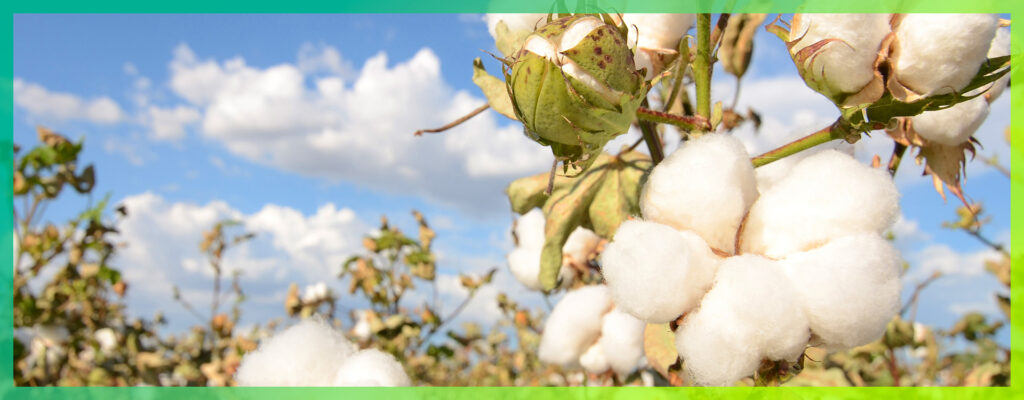
Cotton yields can range from a bale and a half to up to three bales per acre, with bales weighing 500 pounds. I want to help growers secure those top yields, and fortunately have a product that can provide big help. We’re the new kid on the block for this crop and this region, but popularity is growing every year, so we’re on a great track.
Mainstay™ Si is easy to use that mixes without difficulty.
diKaP™ is another Redox product that provides a strong late season boost of potassium and phosphorus.
Rising expenses are a challenge for growers across America, and cotton is no exception. Those higher input costs can cause a more conservative approach, but the cost to benefit ratio is definitely in favor of incorporating Mainstay™ Si.
I hope those higher costs for growers will be outweighed by excellent returns, for both the crop and a farmer’s bottom line, come harvest time.
Questions? Want to know more about Here’s One Step that can make a Big Difference in Your Cotton Yields?
As we move into the summer months, we know the inevitable challenges from hot weather will be upon us. The list of hurdles includes heat, drought, soil moisture management, poor water quality, nutrient imbalances and more.
Turf loss due to disease or abiotic stress conditions is not an option, especially on golf greens. Fortunately, there are numerous products and combinations to work with.
When it comes to strengthening turf during the summer months, what can be done to avoid severe losses?
Why TurfRx™ OxyCal?
TurfRx™ OxyCal was designed to help plants grow through severe stress events by providing active oxygen and vital mineral ions to increase antioxidant levels, while simultaneously putting down a stronger root system, forming hardier leaves that enhances cellular vitality to increase photosynthetic activity despite the adverse growing conditions.
When to use TurfRx™ OxyCal?
Well, there are a couple ways to look at it. One is, adding 1-2 lbs./acre in your turf application tank mix starting in the spring and maintain that rate of 1-2 lbs. as you move through the summer season. Keeping the TurfRx™ OxyCal in at these low rates helps build up plant health as you move into and throughout the summer stress season.
Secondly, as you watch the weather forecast and the upcoming week is for extreme heat say on cool season bent/poa greens and you want to get TurfRx™ OxyCal down before the heat dome hits. 3 – 5 lbs./acre is the recommended rate.
Thirdly, it’s been hot, you walk out on your greens, and they don’t look bad, but they need something, they are not happy, and we have a lot of summertime left to go. Some call it the ‘911 spray,’ as they see the need to turn these greens around right now. At this point, 5 lbs./acre is recommended. Spray on, let set all day as a foliar application, water in that evening.
How to use it?
Mixing instructions.
1. Tank half full of water
2. Agitation on
3. Add Defoamer
4. Take basket screen out, add directly into tank water
5. Measure amount in a measuring cup, 28 oz or 800ml is roughly 2 lbs. See pics below
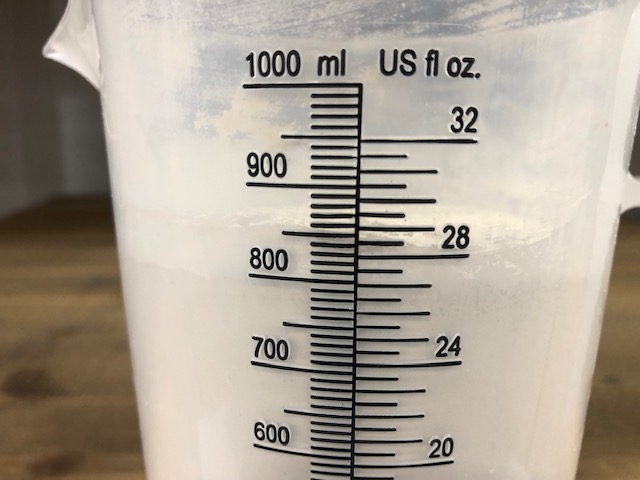
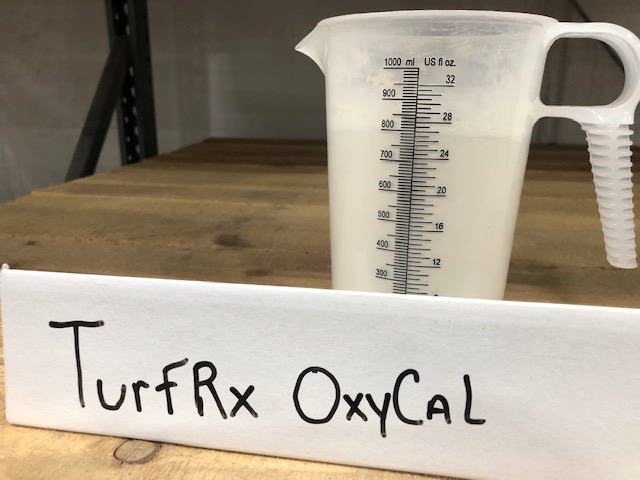
6. Work two pounds at a time to avoid mistakes
7. Add TurfRx™ OxyCal into tank slowly
8. Once desired rate is achieved give it a few minutes to react and hydrate before adding other products.
When mixing TurfRx™ OxyCal, always mix in the tank first. Do not get in a hurry, take your time, as it needs a few minutes to react. It’s like Alka-Seltzer, drop two tablets in a glass of water, and you must wait until it is fully reacted and hydrated before it’s ready.

Can I mix other products in with TurfRx™ OxyCal?
Yes, you can. Fungicides, PGR’S, other fertilizers.
But let’s pump the brakes here a minute.
For TurfRx™ OxyCal applied at the 1 – 2 lb./acre rate, I have not received any negative feedback on compatibility when mixing it at these rates.
TurfRx™ OxyCal applications at the 3-5 lb. rate are recommended during times of extreme stress events, like high heat. Greens are stressed already, TurfRx™ OxyCal is going to deliver, bio-active carbon compounds, properly complexed P-K, Calcium and Sulfate Sulfur. I would consider adding in a fungicide and let it due its thing.
I know it’s painful to make an application with only two or three things in the tank, but when under severe stress and you have 5 lbs./acre of TurfRx™ OxyCal in the tank, let’s not push it. When making a 911 spray to turn things around, this maybe the most important and beneficial spray of the year.
If you are at the 5 lb. rate and want 5 or 6 other products in the tank, that’s your call, I have seen it work, but let’s concentrate on the main issue, that is get this plant back on a track, then move on from there.
Yes, this approach may require an extra spray application that week, but it is well worth the extra time spent doing so versus trying to jam multiple products in the tank that could cause a tank mix nightmare.
It’s important to remember that TurfRx™ OxyCal needs lots of free water to hydrate during mixing, and to stay hydrated in the tank. The more products you add, you increase the odds of the TurfRx™ OxyCal not getting fully hydrated and delivering its full potential of plant health benefits.
The ability of the plant to deal with or productively grow through plant stress is often directly related to the plants ability to metabolize soluble carbon molecules and mineral nutrients.
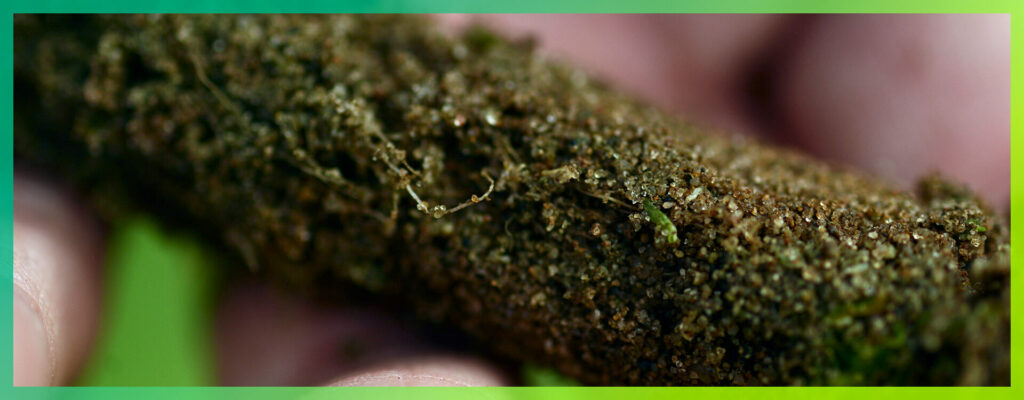
TurfRx™ OxyCal boost key plant enzymes and antioxidants which enhance plant growth, even under severe stress conditions.
It’s almost like you’re tricking the plant to grow in an environment that is better that it is – something valuable when the summer heat is on!
One of the takeaways for the produce world during the pandemic was the value of a resilient onion crop with optimum storability. Achieving this can help growers and shippers manage an unpredictable supply chain.
A critical building block to accomplishing this goal is supplying enough calcium to the onion tissue during cell division, which increases your chance at a firmer, longer-lasting vegetable.
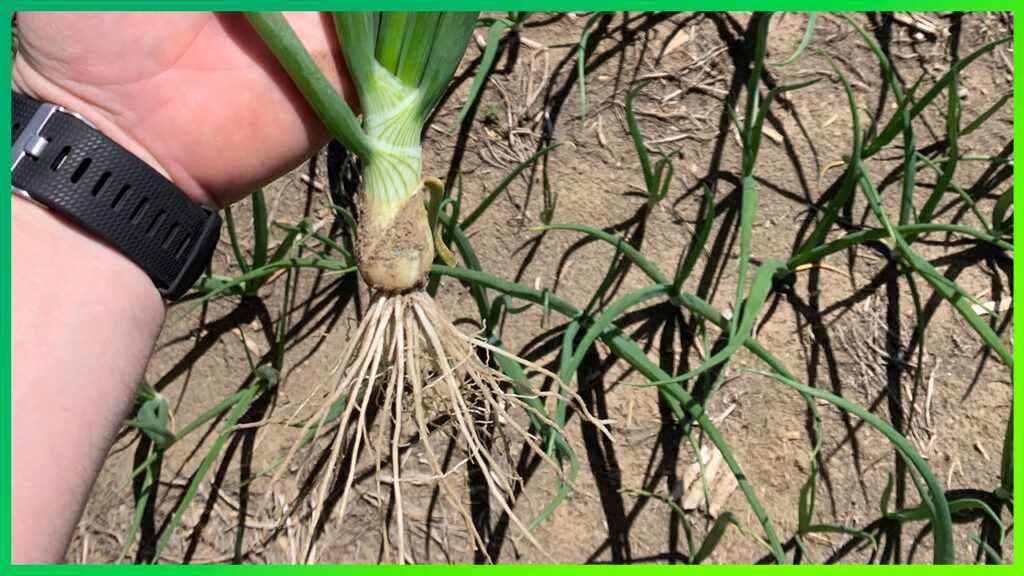
Right now, bulb initiation is underway in many onion fields in Washington’s Columbia Basin. Redox has two products that aid in calcium nutrition and storability. Mainstay™ Calcium is specifically formulated to provide concentrated plant-available calcium for plant nutrition and soil structure. Calcium is an important consideration throughout the entire growing season. However, increasing calcium applications for the next several weeks are crucial to the developing storability in the onion bulb.
Another key component is Mainstay™ Si, which is specifically formulated to provide efficient calcium and silicon nutrition.
Onions have a long and productive history in Washington, with the first crops planted in the late 19th century. Washington ranks third in the U.S. for onion production.
Questions? Want to know more about Calcium is Foundational to a Strong Onion Crop?